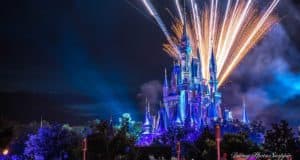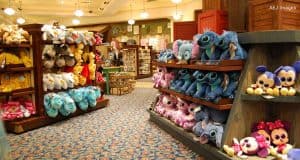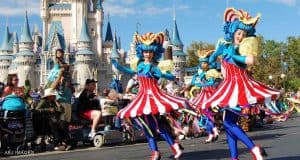
My favorite area in all of Walt Disney World is World Showcase, in Epcot. Eleven different countries are represented around World Showcase Lagoon. They are: Mexico, Norway, China, Germany, Italy, Colonial America, Japan, Morocco, France, the United Kingdom and Canada. Each “country” offers representative landmarks, architecture, artifacts, dining, shopping, and native cast members. To really get the full experience, you should devote one full day to this part of Epcot. World Showcase is full of fascinating tidbits and secrets. Don’t hesitate to engage the cast members about their native land. On your next trip, check out these 15 Delightful Secrets About Epcot’s World Showcase.
1) Mexico – The main building is a pyramid, representative of Aztec and Mayan cultures. Inside, the typical marketplace setting is officially called Plaza de Los Amigos, or plaza of friends. During the day would be a time of siesta with limited activity, so it is themed to nighttime and fiesta to help explain why there are so many people and movement.
2) Rear Entrance – Did you know World Showcase has its own entrance? It called The International Gateway and is located between France and the United Kingdom. It leads to/from the Epcot-area hotels: Beach Club, Yacht Club, Swan & Dolphin and Boardwalk Inn. You can also access the Disney Studios theme park from the International Gateway. If you’d prefer not to walk, you can take a Friendship boat from the International Gateway to/from any of the above.
3) Random Secrets – When World Showcase was built, space was left for 10 additional countries. Since then, Norway and Morocco have been added, leaving room for 8 more. Forced perspective, making buildings and settings appear larger or smaller than they actually are, is used throughout Disney World. World Showcase is no exception. The main building of the American Pavilion appears to just be 2-3 stories, typical for the Colonial era. However, a closer look shows the building is at least 5 stories tall. The opposite effect is at work in the Canadian Pavilion. There, windows start out small and get even smaller as they go up. The effect makes the landmark hotel building appear much taller than it actually is.
4) Norway – The Stave Church is a replica of the Gol Stave Church found in the Norwegian Folk Museum in Oslo. At one time there were more than 1,300 of these churches, but only a little more than two dozen remain today. They are considered some of the oldest wooden structures still in existence.
5) China – The circular Hall of Prayer for Good Harvest is a one-half scale reproduction of its counterpart inside the Temple of Heaven complex near Beijing. As you enter, there are four red columns decorated in gold, representing the four seasons. If you stand in the exact center of the columns and speak, the acoustics are like the actual Hall of Prayer so you will hear your voice echo but your friends will not hear it do so. The emperor would come here to pray for a good harvest or give thanks for one that had happened.
6) Germany – Every hour, underneath the clock, huge Hummel figures appear and chime the hour. However, clever guests look above the clock where a wooden rooster pops out and flutters its wings at the same time.
7) Italy – When you enter the pavilion, the building on the left is the Doge’s Palace of Venice, the residence of the ruling Dukes that took many centuries to complete. The tall bell tower is the Campanile that stands next to the Doge’s Palace in Venice but is located on the other side and the Epcot version is built 1/5 scale. The angel at the top is covered in 14 karat gold leaf.
8) Colonial America – Handmade Georgia clay bricks, 110,000 of them, decorate the outside of the building. They were colored and aged to look more authentic to the time period.
9) Japan – The Katsura Grill is a small version of the Shoken-tei (teahouse) in the Kyoto Imperial Villa gardens at the Katsura Summer Palace. The building that houses Mitsukoshi Department Store is modeled after the Great Hall of Ceremonies once part of the Gosho Imperial Palace in Kyoto and built in 794 A.D.
10) Morocco – The design of the pavilion was inspired by three cities: Fez, Casablanca and Marrakesh. Several Moroccan artisans worked for approximately six months doing the artwork for the pavilion. Those artisans included eight plaster craftsmen, 11 tile craftsmen and two wood craftsmen. There is also a museum in Morocco. Many guests don’t realize it’s there. Inside you will find a small, ornate museum called the Gallery of Arts and History. The rooms that display the exhibits are a work of art themselves.
11) France – The Eiffel Tower is a 1/10 replica of the one in Paris and was constructed using engineer Gustav Eiffel’s original blueprints. In Epcot, the Eiffel Tower is more tan and pinkish than the one that exists today in Paris. The reason is that the France Pavilion represents “La Belle Epoque” of the late 1800s and the Eiffel Tower is the same color it would have been at that time when it was new. Disney has to use several different methods to keep birds off the Eiffel Tower. A bird perched atop would ruin the forced perspective, and expose just how small the Eiffel Tower actually is.
12) The English Channel – The France Pavilion is adjacent to the United Kingdom Pavilion. Guests cross over a bridge to walk from one to the other. The waterway under the bridge is meant to symbolize the English Channel that divides the two countries.
Bonus Tip!
BONUS TIP: Consider planning and booking your next Disney trip with an Authorized Disney Vacation Planner you can trust like Mickey Travels. They’ll help you get the best Disney travel deal, share expert advice and their services are totally FREE! It’s genius! Discover More >
13) United Kingdom – The term “pub” comes from the expression “public house” where the town would gather together. The Rose and Crown combines elements from three basic pub designs: the street pub, the waterfront pub, and the country pub. The exterior design was modeled after the Elizabethan period of the late 16th century. The interior decor was patterned after Victorian architectural forms of the 1890s.
14) Canada – That 30-foot totem pole by the Trading Post was carved out of 700 pounds of red cedar by renowned Tsimshian Indian carver David Boxley, and was placed there in April 1998. The top of the pole depicts the story of Raven tricking the Chief of the Skies to release the sun, moon and stars from a carved cedar chest.
15) Authenticity – There is a sense of authenticity that guests feel as they wander through these World Showcase pavilions. The Imagineers worked closely with consultants and historians to try to create an accurate atmosphere that immerses guests in the experience of being in a foreign country. These “secrets” of World Showcase help make their efforts a reality.
BONUS TIP: Consider planning and booking your next Disney trip with an Authorized Disney Vacation Planner you can trust like Mickey Travels. They’ll help you get the best Walt Disney World deal, share expert advice and their services are totally FREE! It’s genius!



